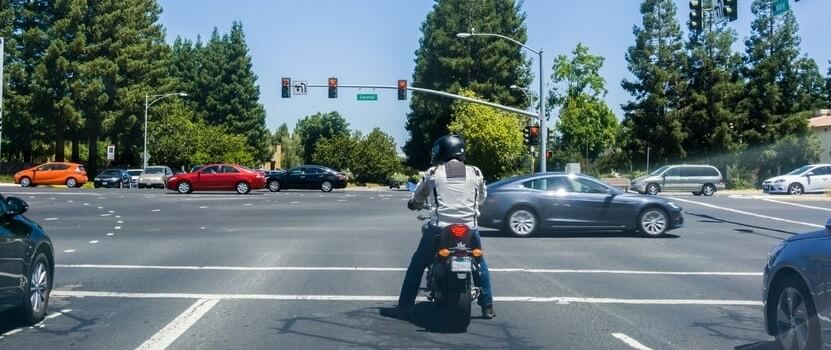The weather is warm and the days are longer. That means “spring has sprung” and it’s the perfect time to take your motorcycle out for a spin! But you’re not the only one heading to the open road and that means extra traffic and the probability of more accidents. Let’s face it – accidents involving motorcycles are far different from accidents involving cars. With no “hard body” to protect you, the chances are that a motorcyclist involved in an accident will experience more serious injuries than someone in a car.
No doubt you’ve seen the roadside memorials and the stickers on vehicles saying to watch out for motorcycles. Why is motorcycle safety such a “hot” topic? It’s simple: motorists aren’t always on the lookout for much smaller vehicles and when an accident with a motorcycle does occur, generally the rider of the cycle is hurt – really hurt. And to add insult to injury, drivers who should carry the most protective insurance are the ones to actually carry the least. Motorcycle accidents are serious business.
Motorcycle Safety Tips
According to Allstate Insurance, 46% of all motorcycle accidents occur at intersections. They go on to report that, on average, three motorcyclists are killed every day in the U.S. as a result of multi-vehicle crashes at intersections. Those statistics are frightening.
The Motorcycle Safety Foundation suggests that all motorcyclists, regardless of whether they are new riders or cycle veterans, follow four major guidelines for riding motorcycles safely.
- Be visible: Keep your lights on and stay out of car and truck blind spots.
- Dress for safety: The only thing between you and the road is your gear. Wear leather or thick clothing, choosing long sleeves, pants, gloves, a quality helmet, and eye protection.
- Stay alert: Constantly scan the road for changing conditions, signal your moves in advance, don’t weave between lanes.
- Know your bike and how to use it: Learn how to handle your bike in all kinds of weather conditions and types of roads. Practice and develop your driving techniques before you start driving on high traffic roads.
Shopping For Your Motorcycle
Consumer Reports suggests that you buy only what you can handle. Today’s motorcycles are powerful vehicles. Even models with smaller engines are far faster and more powerful than they were a decade or two ago. Boomers who are retiring and giving into dreams of hitting the road on a motorcycle will be especially surprised about the changes that have taken place in motorcycle engine design and power over the years.
When shopping for a motorcycle:
- Try out different makes and models until you find one that “fits” you physically. Ask yourself, is it too heavy? Where do I plan on riding it? On the highway? Off road?
- Purchase a bike with antilock brakes (ABS) which are now widely available on motorcycles. Without antilock brakes, the brakes can lock up, which reduces steering control.
Staying Smart and Safe
It goes without saying that you need to stay alert at all times while operating a motorcycle. It’s far too easy to become hidden in other driver’s blind spots. Stop, think, and plan what you can do to remain as safe as possible. You should:
- Beef up on your riding skills and take a safety course. The Motorcycle Safety Foundation has a list of 2,700 locations for courses around the U.S.
- Think smart. Wear a helmet! Consumer Reports cites a recent government study showing that riders without helmets are 40 percent more likely to suffer a fatal head injury and three times more likely to suffer brain injuries.
- Wear the right gear. Yes, it may be hot out and you may be tempted to wear a t-shirt, shorts, and sandals. Remember that they won’t protect you from anything. It’s better to be warm and safe.
- Drive defensively. The University of South Florida’s Center for Urban Transportation Research has found that in accidents between cars and motorcycles, car drivers were at fault 60 percent of the time.
- Bad weather. Margins of error increase dramatically in bad weather. For instance, rain hurts your visibility and the ability for your tires to grip the road, especially when it first starts raining the oils in the road are released making for slippery driving.
Stay safe and enjoy our wonderful Florida sunshine while riding your motorcycle.
